Abstract
1. Our previous studies have shown that octopamine and serotonin are found associated with a system of neurones in the connective tissue sheath of the second roots of lobster thoracic ganglia. To try to understand the mechanism of activation of these neurones, we undertook an examination of their general physiological properties. 2. All of the neurones receive excitatory synaptic input that has a cholinergic pharmacology, which suggests that it may be from sensory neurones. A very limited number of cells, possibly one, provdes the total synaptic input to all the cells in the roots of the second and third thoracic segments. 3. The cells within one root are electronically coupled to each other. The extent of coupling varies widely between cells; on occasion the coupling is sufficiently tight for action potentials originating in one cell to trigger action potentials in the neighbouring cell. 4. The majority of the cells show no spontaneous activity at temperatures below 14 degrees C, but become spontaneously active above that temperature. Cells cycle reversibly from silent to continuously active to bursting and back as the temperature is increased and decreased. 5. Octopamine and serotonin both inhibit the bursting activity. The octopamine response is blocked by phentolamine but not by propranolol, while the inhibitory action of serotonin is unaffected by either of these drugs. The amine-inhibition of the firing could be an autoregulatory mechanism for cell activity. 6. The physiological properties described in this paper suggest that the widely dispersed amine-containing neurones in lobsters behave like a neurosecretory organ in terms of their mechanism of activation.
Full text
PDF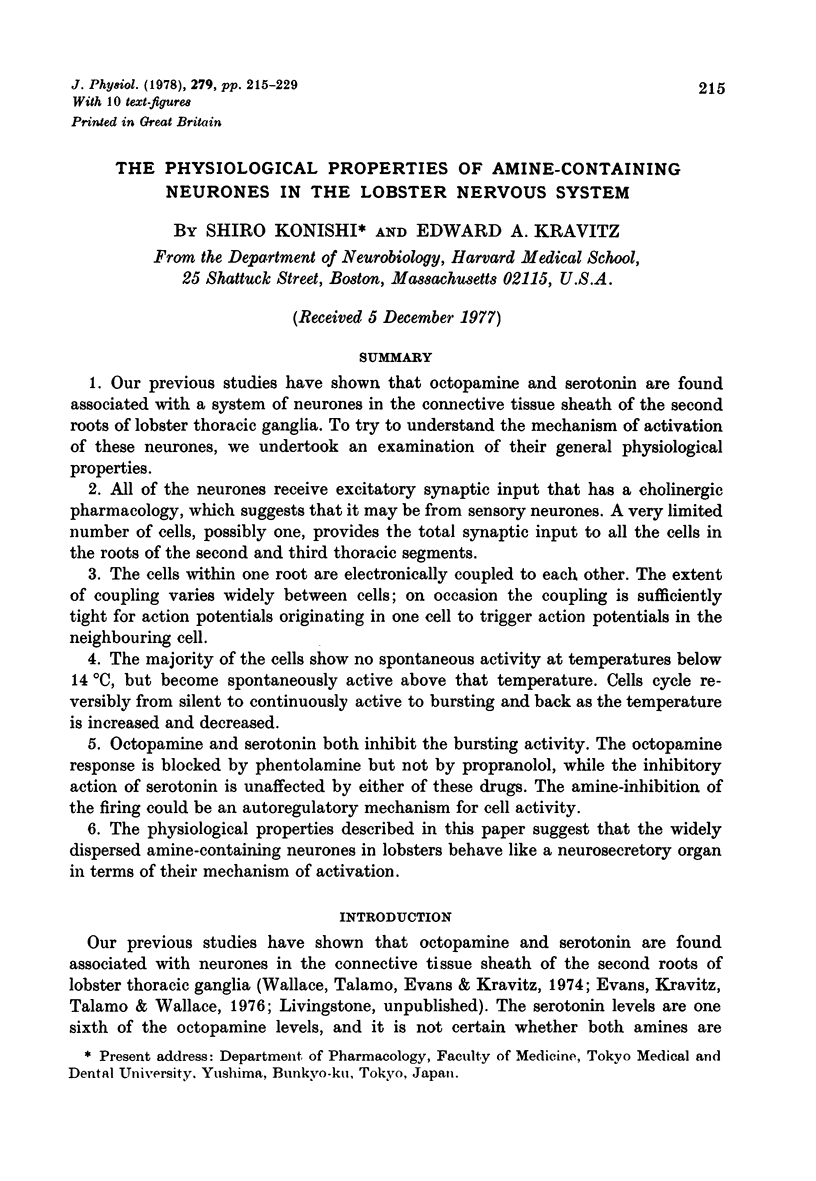



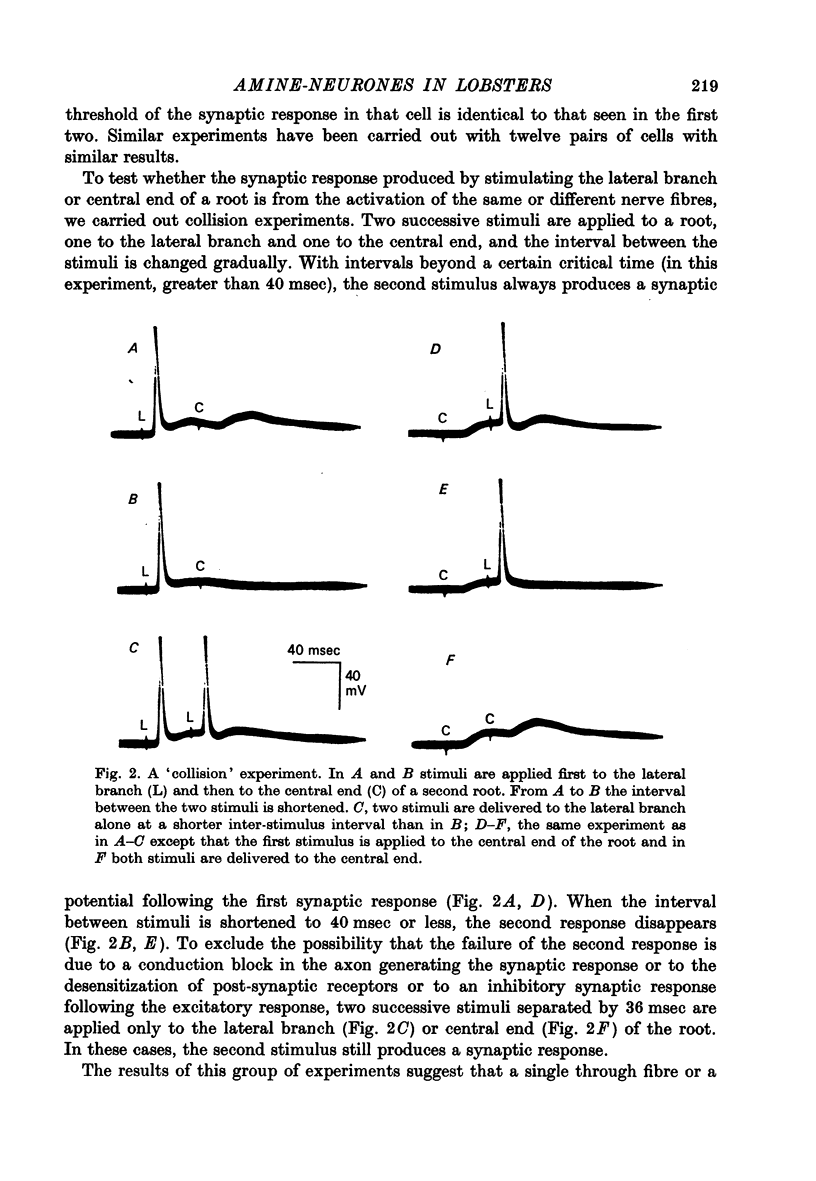


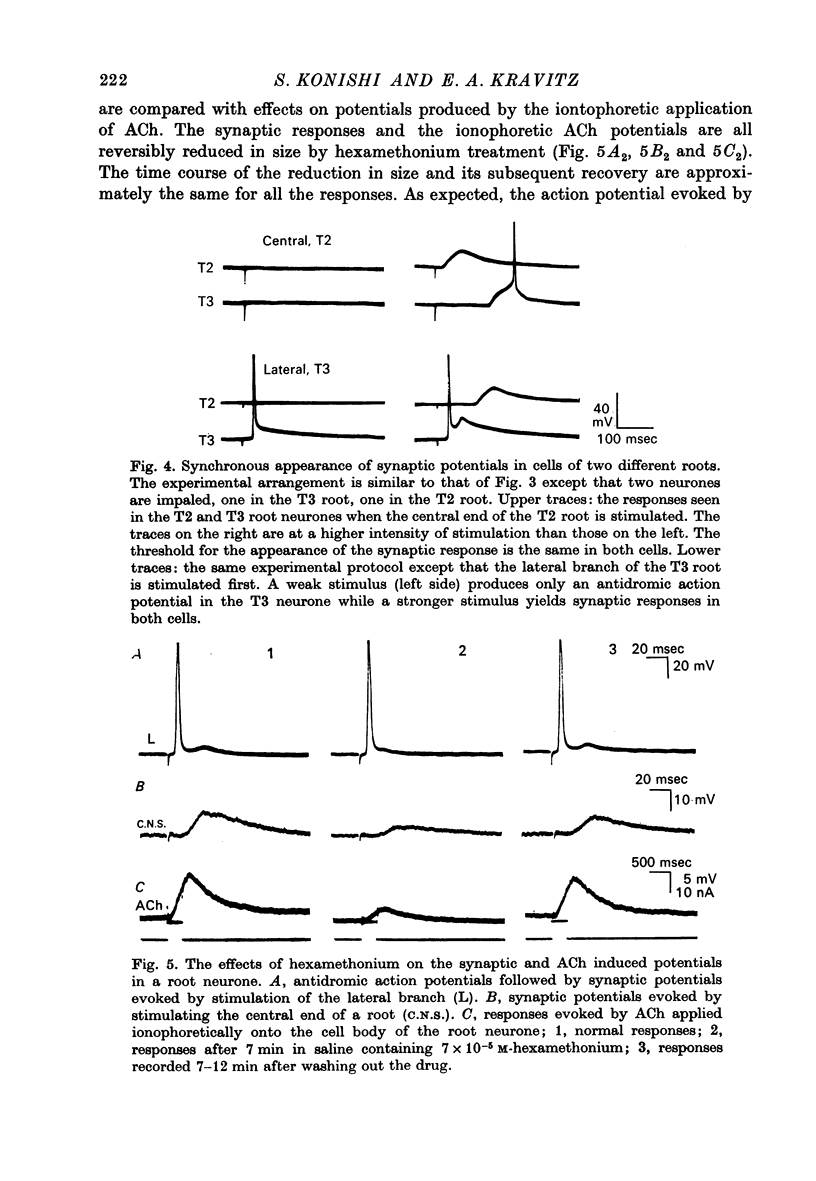
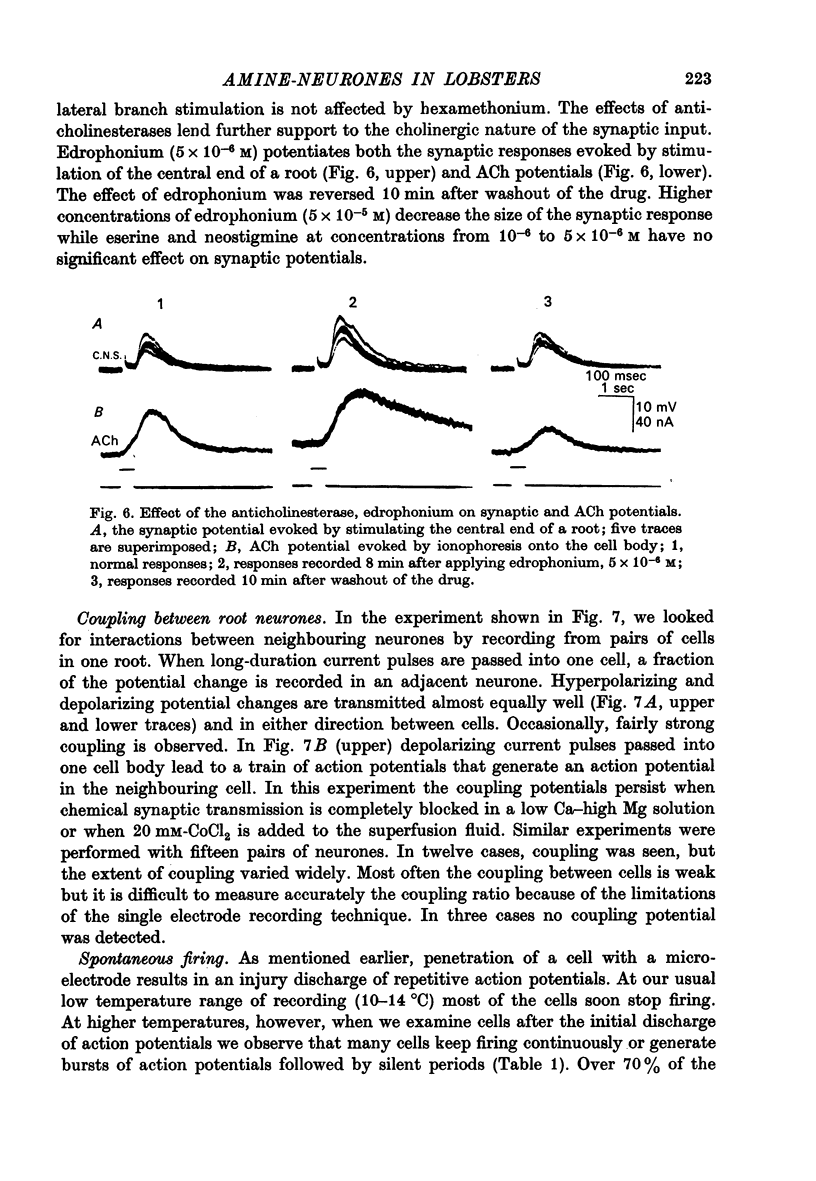
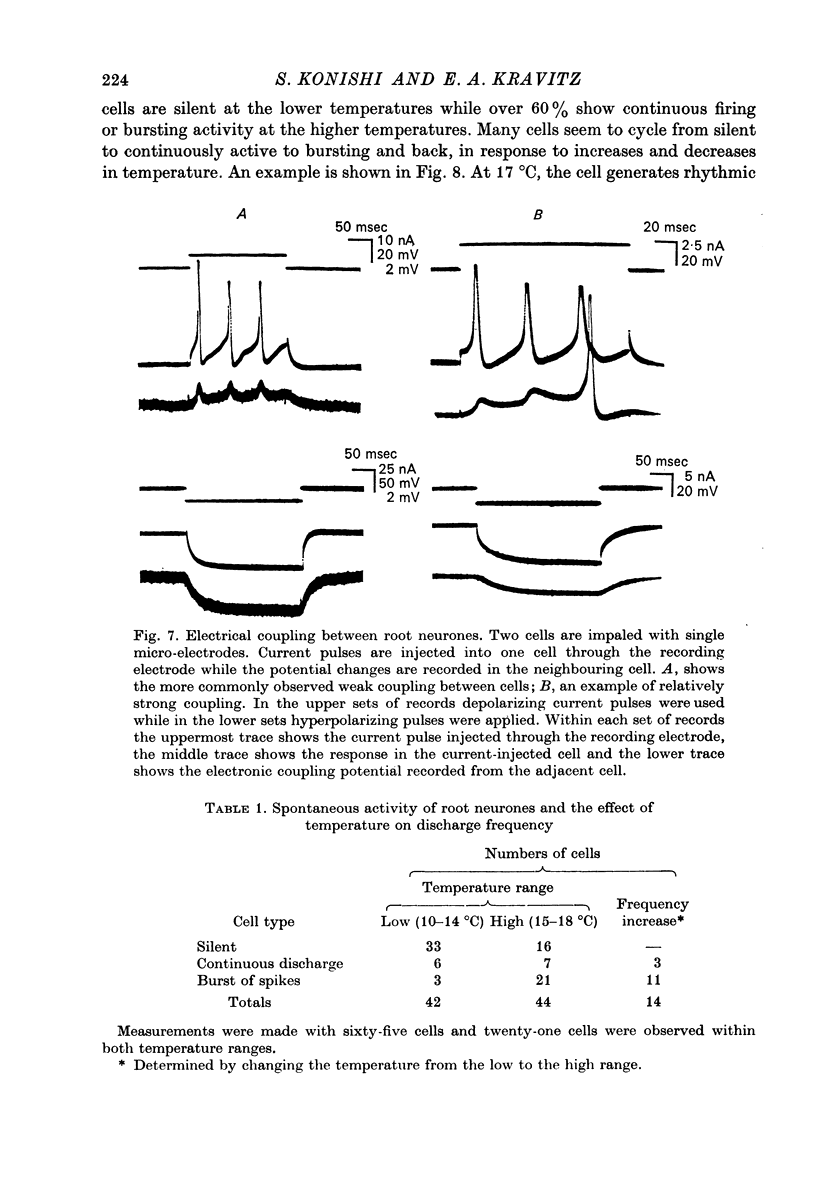
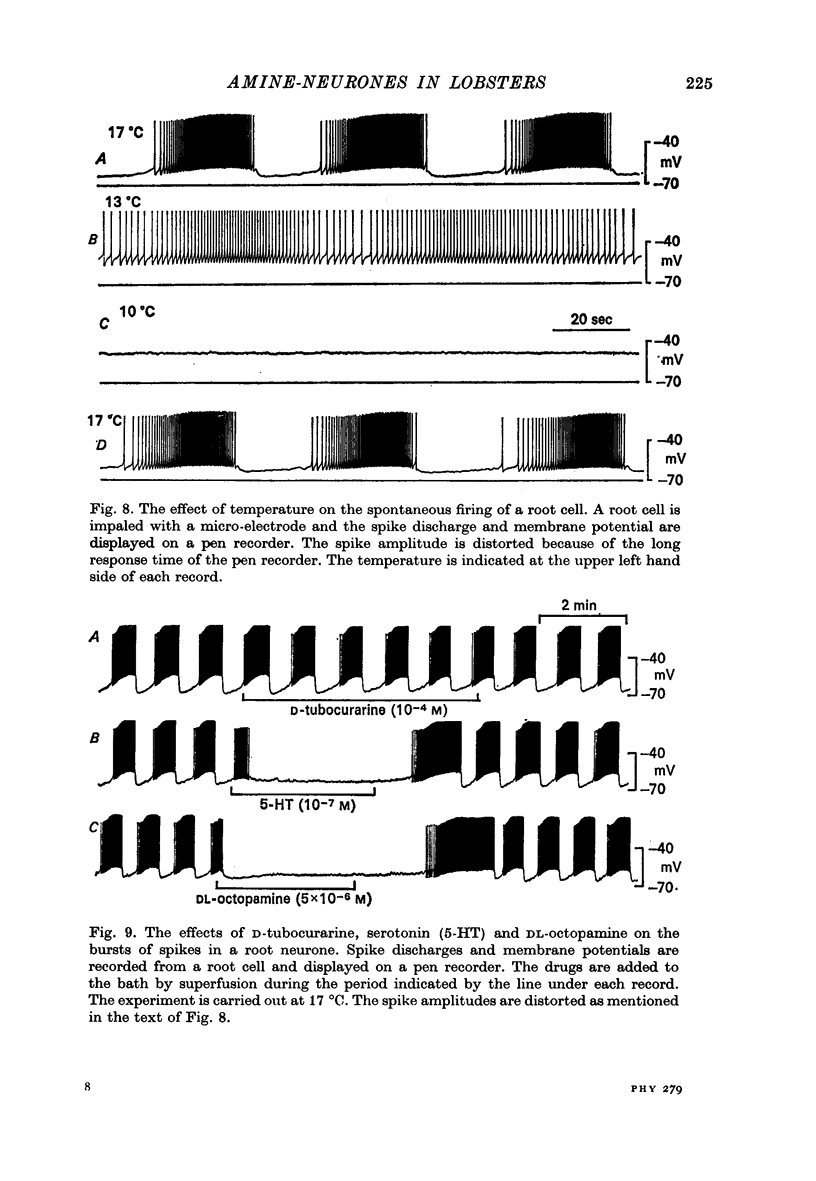
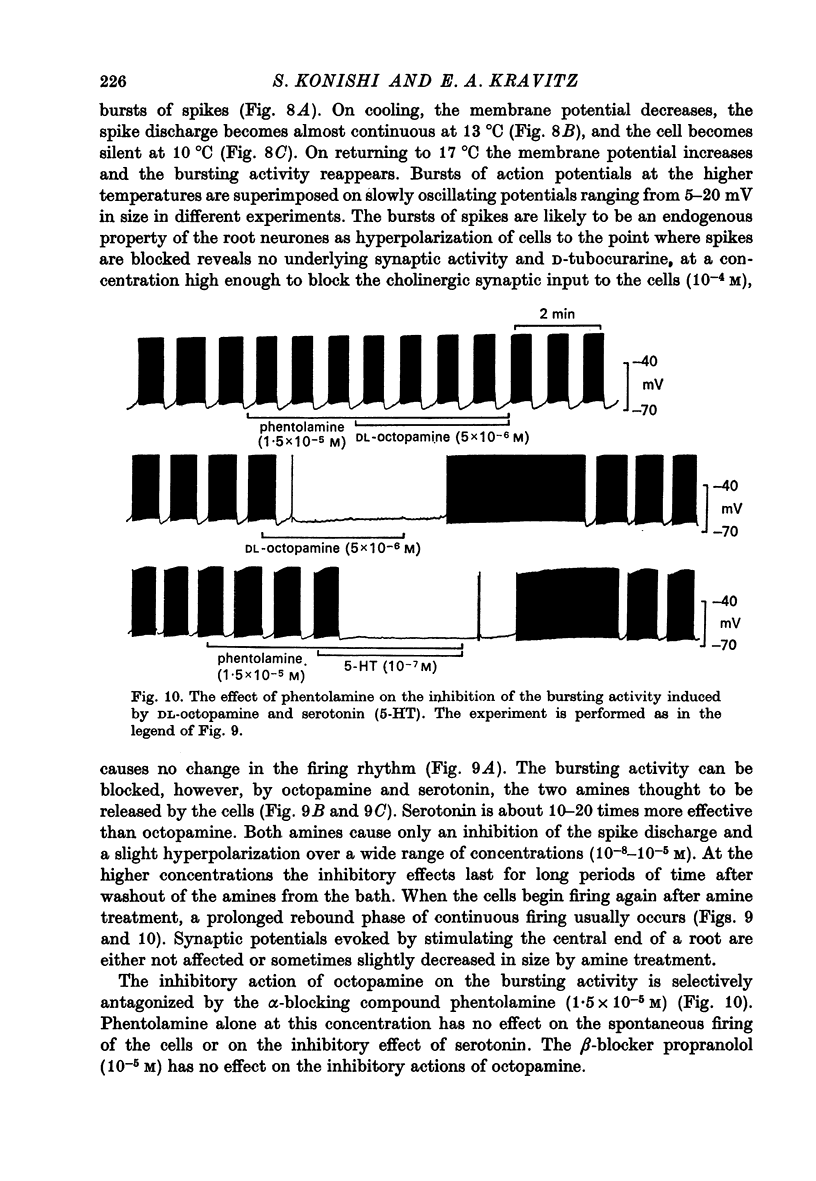

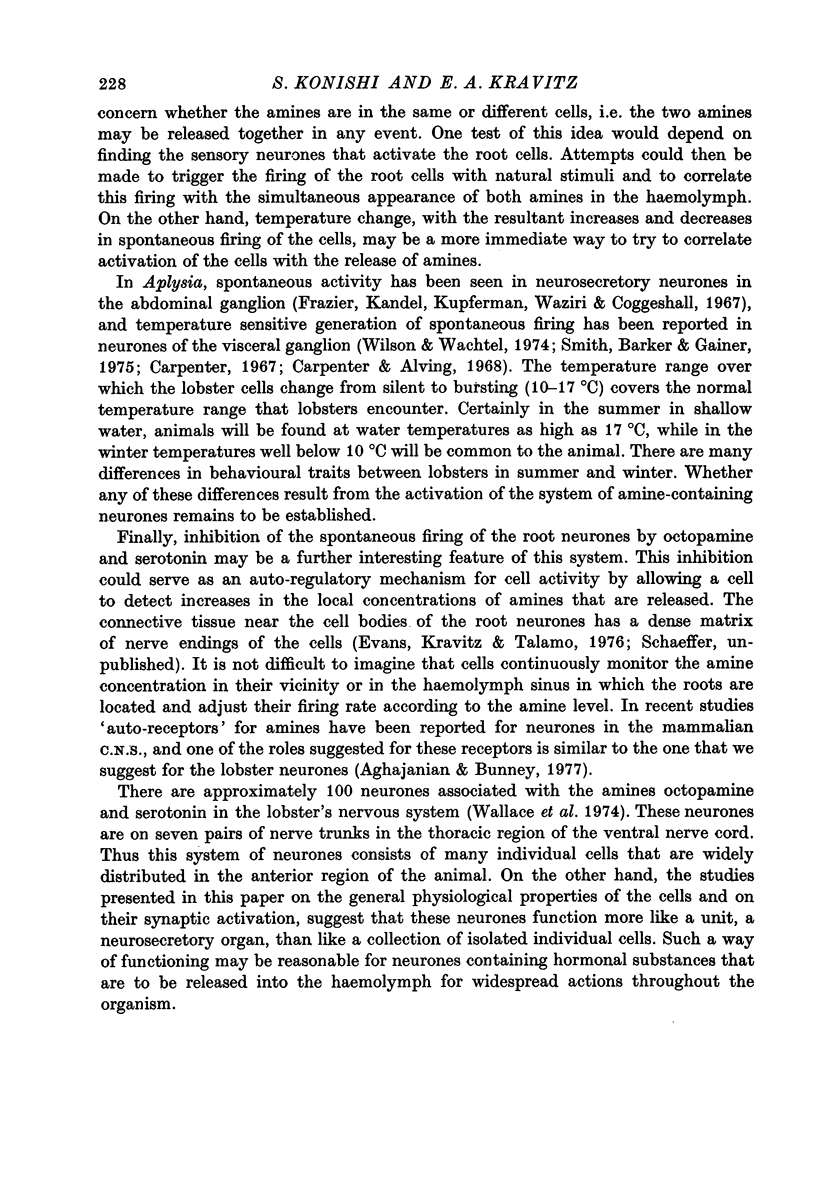

Images in this article
Selected References
These references are in PubMed. This may not be the complete list of references from this article.
- Aghajanian G. K., Bunney B. S. Dopamine"autoreceptors": pharmacological characterization by microiontophoretic single cell recording studies. Naunyn Schmiedebergs Arch Pharmacol. 1977 Mar;297(1):1–7. doi: 10.1007/BF00508803. [DOI] [PubMed] [Google Scholar]
- Barker D. L., Herbert E., Hildebrand J. G., Kravitz E. A. Acetylcholine and lobster sensory neurones. J Physiol. 1972 Oct;226(1):205–229. doi: 10.1113/jphysiol.1972.sp009981. [DOI] [PMC free article] [PubMed] [Google Scholar]
- Carpenter D. O., Alving B. O. A contribution of an electrogenic Na+ pump to membrane potential in Aplysia neurons. J Gen Physiol. 1968 Jul;52(1):1–21. doi: 10.1085/jgp.52.1.1. [DOI] [PMC free article] [PubMed] [Google Scholar]
- Carpenter D. O. Temperature effects on pacemaker generation, membrane potential, and critical firing threshold in Aplysia neurons. J Gen Physiol. 1967 Jul;50(6):1469–1484. doi: 10.1085/jgp.50.6.1469. [DOI] [PMC free article] [PubMed] [Google Scholar]
- Evans P. D., Kravitz E. A., Talamo B. R. Octopamine release at two points along lobster nerve trunks. J Physiol. 1976 Oct;262(1):71–89. doi: 10.1113/jphysiol.1976.sp011586. [DOI] [PMC free article] [PubMed] [Google Scholar]
- Evans P. D., Kravitz E. A., Talamo B. R., Wallace B. G. The association of octopamine with specific neurones along lobster nerve trunks. J Physiol. 1976 Oct;262(1):51–70. doi: 10.1113/jphysiol.1976.sp011585. [DOI] [PMC free article] [PubMed] [Google Scholar]
- Smith T. G., Jr, Barker J. L., Gainer H. Requirements for bursting pacemaker potential activity in molluscan neurones. Nature. 1975 Feb 6;253(5491):450–452. doi: 10.1038/253450a0. [DOI] [PubMed] [Google Scholar]
- Wallace B. G., Talamo B. R., Evans P. D., Kravitz E. A. Octopamine: selective association with specific neurons in the lobster nervous system. Brain Res. 1974 Jul 12;74(2):349–355. doi: 10.1016/0006-8993(74)90590-3. [DOI] [PubMed] [Google Scholar]
- Wilson W. A., Wachtel H. Negative resistance characteristic essential for the maintenance of slow oscillations in bursting neurons. Science. 1974 Dec 6;186(4167):932–934. doi: 10.1126/science.186.4167.932. [DOI] [PubMed] [Google Scholar]



